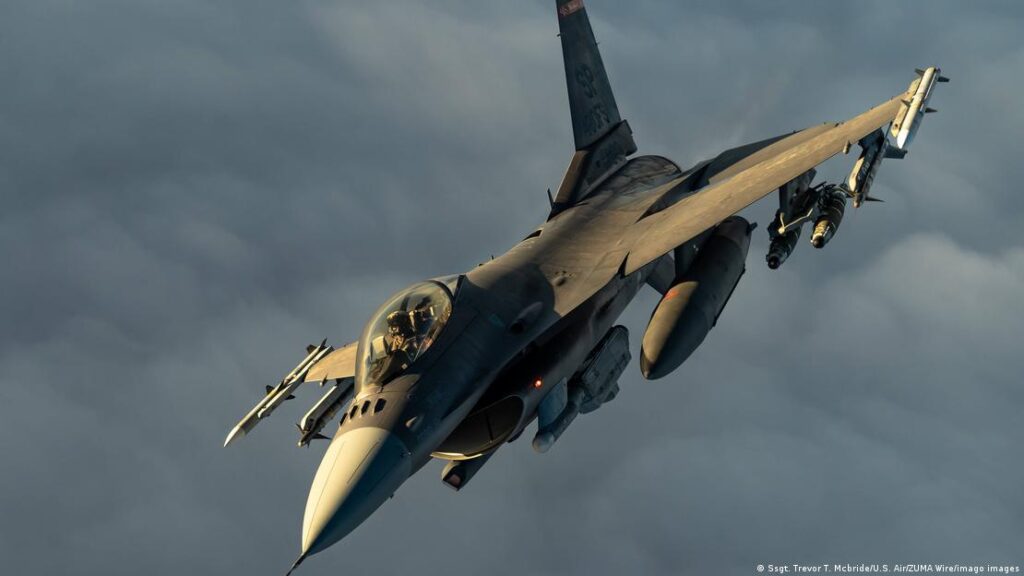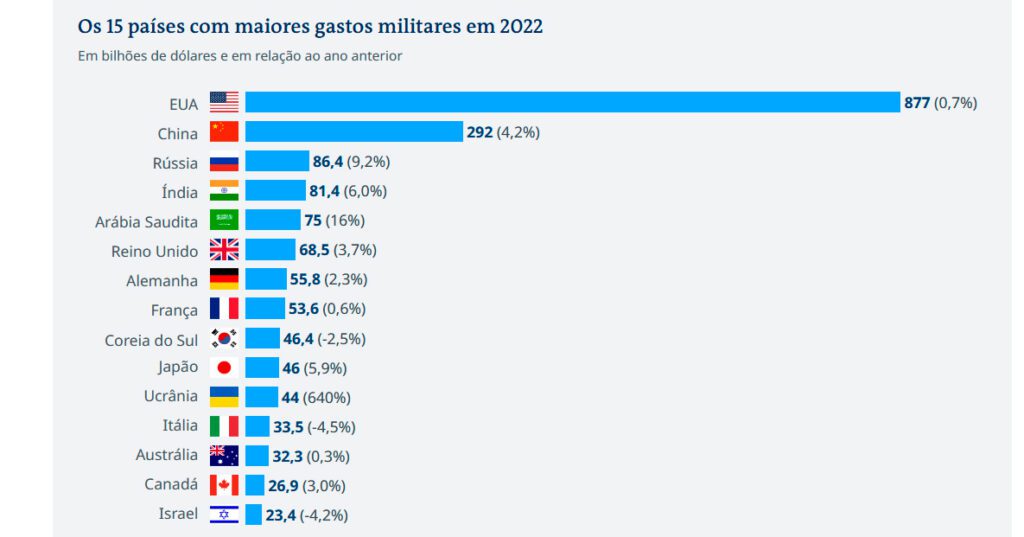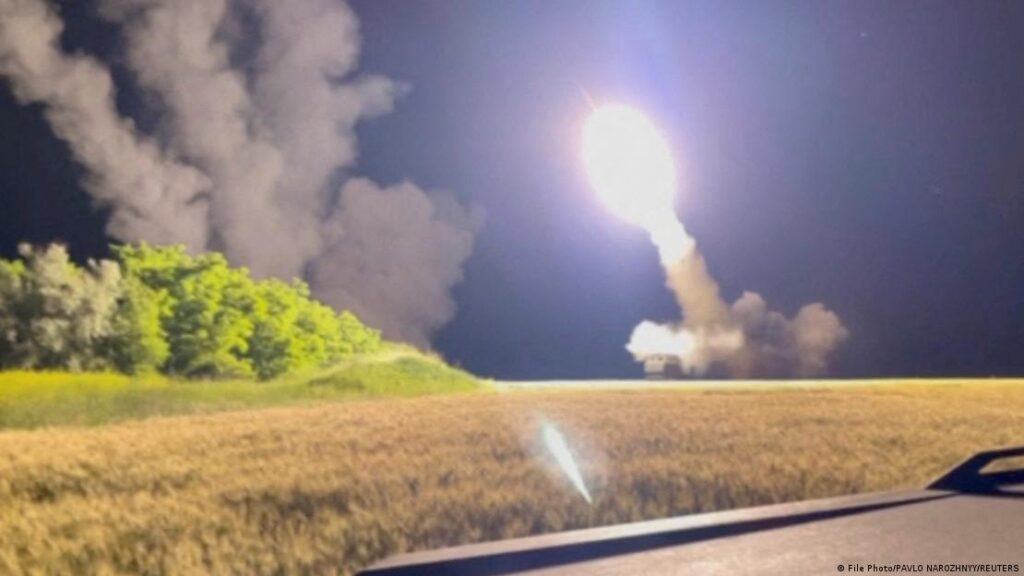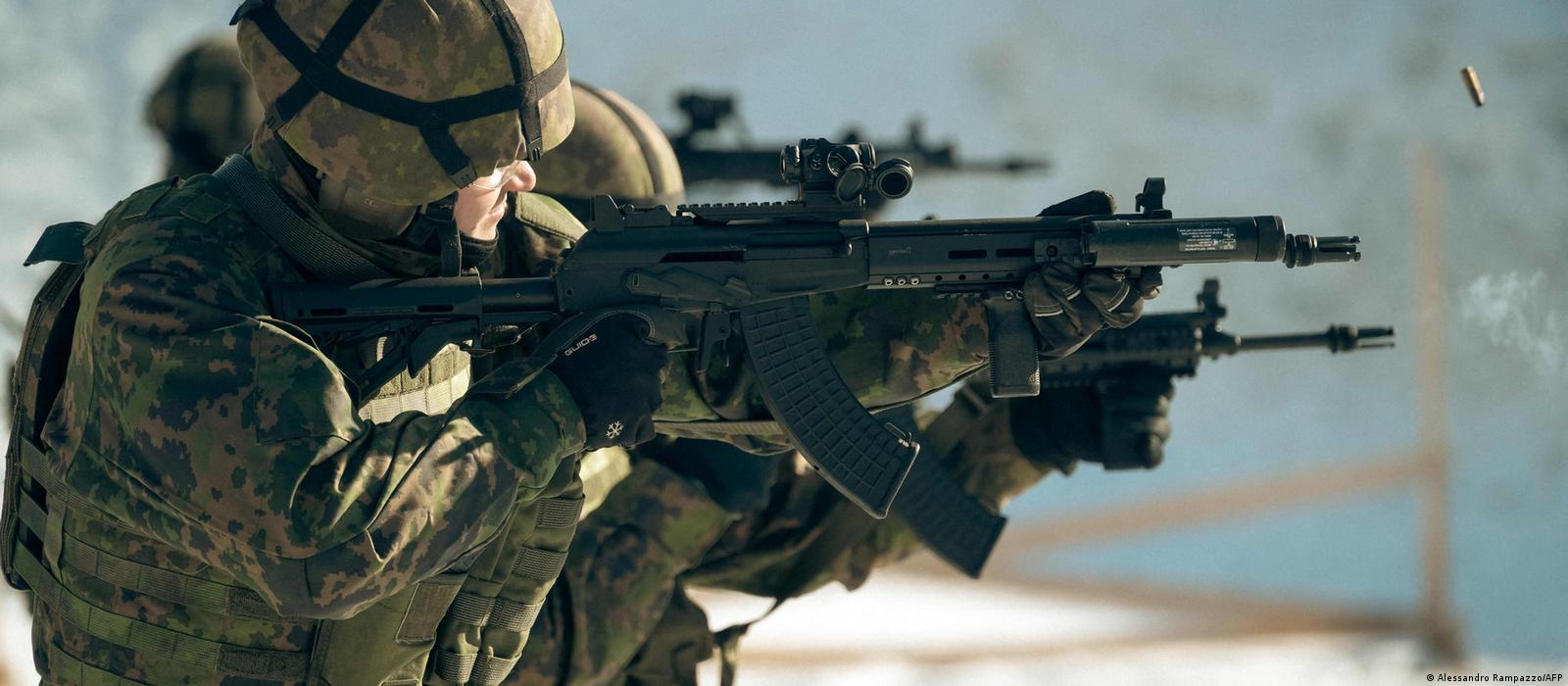Europe has largest post-Cold War annual increase. Invasion of Ukraine, inflation, and U.S. efforts to contain China are among major factors behind the increase.
(DW) Global military spending continues to rise. Mainly because of Russia’s war of aggression against Ukraine, they took a 3.7% jump in 2022 over the previous year, taking inflation into account. They reached a level of $2.24 trillion, according to the new annual report of the Stockholm International Peace Research Institute (Sipri), one of the leading global security think tanks, released on Monday (Apr. 24).
Thus, for the eighth year in a row the nations of the world spent more money on their armed forces than in the previous year. Without considering inflation, the increase would be 6.5%.
The USA continues to lead the list, with a wide advantage, followed by China and Russia. Germany comes in seventh place.
13% increase in Europe
The biggest increase in spending occurred in Europe, which registered an increase (adjusted for inflation) of 13%, the highest annual growth in the post-Cold War era. This was mainly due to the jump in military spending in Russia and Ukraine. Military aid to Kiev and concerns about Russia’s increased threat, according to Sipri, also influenced the spending decisions of many other countries.
Many former Eastern bloc countries have more than doubled their military spending since 2014 – the year of Russia’s annexation of Crimea. By 2022, Central and Western European countries spent a total of $345 billion on defense. With that, they surpassed, taking inflation into account, for the first time the figures from 1989, when the Cold War ended.
“The Russian invasion of Ukraine in February 2022 has directly affected the decisions of these countries. This is what they have shown, for example, in multi-year plans for spending increases,” said Sipri expert Diego Lopes da Silva. As a result, further increases can be expected in the coming years.
“Regardless of whether economies are doing better or worse than expected, the military is absorbing more financial resources than in previous years or even more than ever in history,” Nan Tian, a senior researcher at Sipri and one of the authors of the report, told DW.

Security concerns
Defense spending among members of NATO, the military alliance that many European countries are part of, has been rising since at least 2014. That was when Russia first attacked Ukraine, illegally annexing the Crimean peninsula and supporting separatists in the eastern part of the country. NATO members have agreed to a defense spending target of 2 percent of national GDP by 2024, and many of them are slowly getting there.
Governments are responding to a growing sense of deteriorating security and thus contributing to increased defense spending. At the same time, however, Sipri data show that the spending surge may not be as pronounced as headlines and policymakers sometimes make it seem.
While real spending has increased, reaching a combined $2.2 trillion in 2022 as a share of GDP, it is 0.1% lower than in 2013. This is despite double-digit increases over the past decade in many countries, including nuclear-armed states and those known to prioritize their militaries, such as China (63%), India (47%), and Israel (26%).

More spending also due to inflation
In each of these places, however, defense spending has declined as a percentage of national economic output.
The discrepancy suggests that economic expansion has outpaced national budgets for areas like defense, even if the dollar figures may seem impressive; and rapid, record inflation has forced governments to spend more.
In other words, they have lost purchasing power. A defense ministry faces similar price pressures when buying a squadron of jet fighters that the average family faces when buying a carton of eggs.
Countries looking to not only maintain, but increase or upgrade their armed forces, need to spend even more, is what the Sipri report reflects. “Although countries have increased spending by 15 percent, in nominal terms, if you adjust for inflation, they even decrease, depending on the case,” Nan Tian says.
Inflation has been a political problem, particularly in Germany, which early last year pledged 100 billion euros in additional funding for its armed forces in response to Russian aggression, after years of facing criticism for not spending enough.
The sum, which is added to Germany’s regular defense budget, is not included in the Sipri data because that money was not yet available to be spent last year. Even when the funds start to flow, Germany may still fall short of NATO goals, according to an analysis by the German Economic Institute late last year.
Military spending doesn’t just cover weapons
National defense establishments are sprawling institutions, employing millions of thousands of civilians and military personnel, sometimes in distant and hostile places, at great cost. These people need to be fed and clothed, and have an administration to manage them.
More spending, therefore, does not necessarily translate into more weapons and up-to-date fighting forces. While the war industry is growing and under pressure to meet demand, defense ministries are also paying to keep the lights on and the bathrooms clean, just like any office.
The year on year increase is also reflected in military aid, which has seen an exceptional increase due to Russia’s war in Ukraine. The United States alone has contributed more than $47 billion to the defense of Ukraine, according to the Institute for World Economics in Kiel, Germany.
The portion of the spending that goes directly to tools of death and destruction varies by country and it can be difficult to assess how effectively. This is because there is a “lag effect,” according to Nan Tian.
Weapons systems are large and complex and can take years to develop, then procure and put into service. Many of the aircraft, missile batteries, and armored vehicles that are considered top-of-the-line, and that Ukraine has pushed to receive from NATO members, are decades old.
Some of the most recent spending, Sipri notes, is going toward modernizing nuclear forces that most hope will never be used.

US takes 39% of global spending
The US, which is always by far the leader in military production, continues to lead the way in 2022, with an official defense budget of $877 billion, according to the report. That represents 39% of global military spending.
This defense spending is lower, as a percentage of U.S. GDP, than it was in 2013, and is a far cry from the Cold War record of nearly 10 percent.
China is in a distant second place, spending $292 billion last year. Despite the difference between the world’s two largest economies, many U.S. officials and security analysts warn that China is gaining a military advantage.
To the extent that this is true, it may have to do with the area in which this money is being spent. While China is exerting its military strength in its part of the Pacific, the U.S. seems determined to maintain its security footprint around the world – a tactic it has maintained since World War II.
